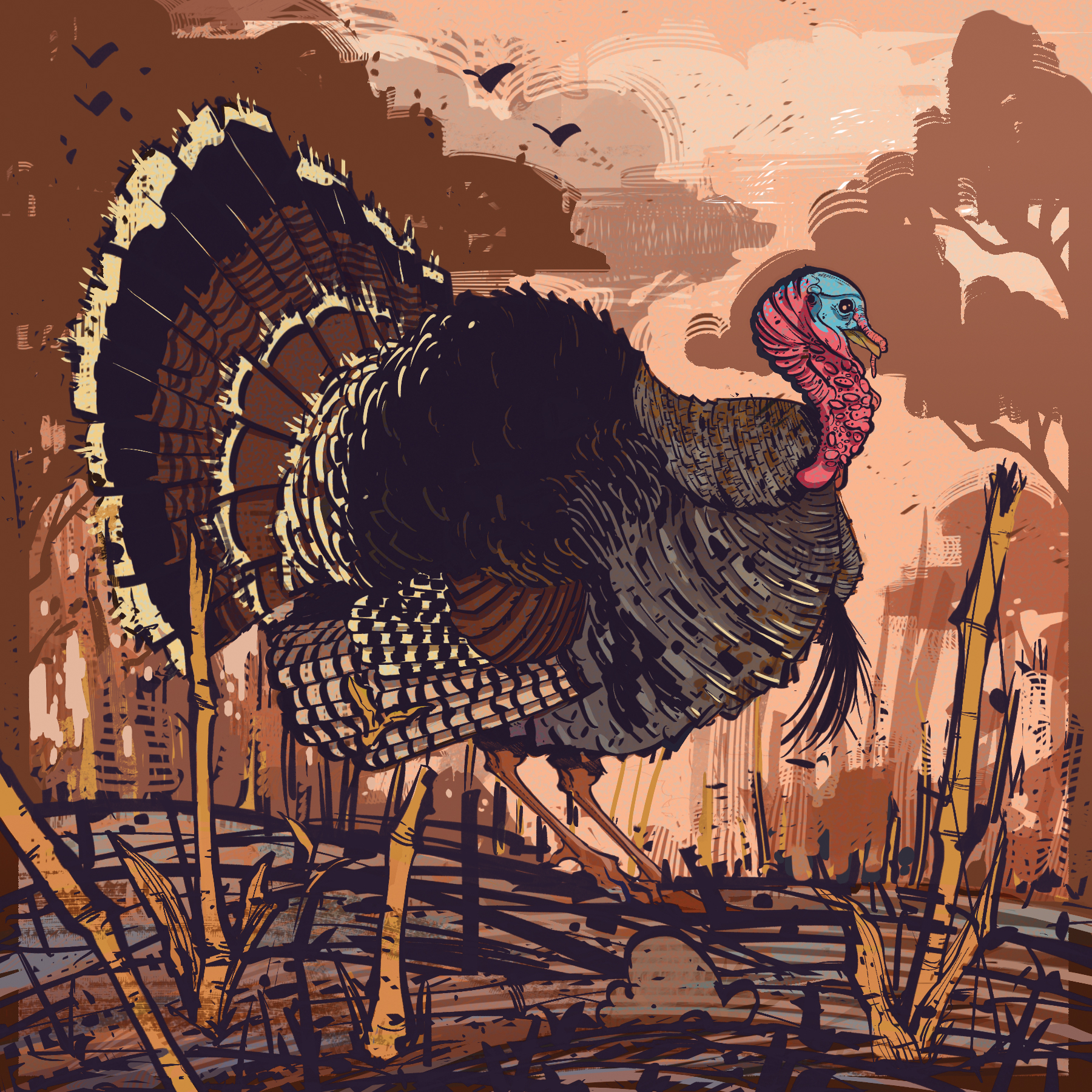Wild turkeys are not native to BC, but over the past century or so they have been introduced, with limited success, to many parts of the province. Currently, region 4 (Kootenays) supports the strongest turkey populations, where the average hunter harvest (2016 to 2020) was 620 turkeys annually, and that harvest is trending up. Over the same time period, hunters in region 8 (Okanagan) took about 10 per cent of that number.
Advertisement

With both spring and fall open seasons in regions 4 and 8, as well as LEH hunts in region 4 in December for a wild Christmas turkey, there are opportunities for all BC hunters. But this is not a gift hunt. To be successful, a turkey hunter needs to know what makes hunting these birds a challenge.
To start with, wild turkeys are big and tasty, and popular with a long list of predators, from cougars and coyotes to eagles and owls. So, they learn very early in life to be constantly alert and to run or fly away at the least sign of danger, and that includes humans. The good news is that of the five senses, only two are important for turkey hunters to overcome, but the bad news is that with wild turkeys, those two senses, sight and hearing, make a very effective early warning system.
Advertisement
Turkeys can see very well. A turkey’s eyes are located on the sides of their head and that gives them about 300 degrees of view. With their head stationary, there is a small blind spot directly behind, but with a slight head movement, that is also covered. They can apparently see in full colour and their eyes are particularly sensitive to motion. I read that at 100 metres, turkeys can spot a movement as subtle a hunter blinking his eyes. That is probably hyperbole, but it gets the point across. Turkeys can also see things we can’t, such as the ultraviolet end of the light spectrum. The phosphates in laundry soap that enhance the colours of our clothes unfortunately also make us hunters extra visible to a bird that can see UV light. Fortunately, there are limits even to wild turkey vision. With their eyes placed on the sides of their head, their sight is monocular (compared a human’s binocular vision with our eyes in front) and so they have poor distance perception. They see you, but they’re not sure how far away you are.
If you are in camo and stay perfectly still, a wild turkey may walk up to you in response to your call, and that brings us to turkey hearing. Turkeys will come to artificial calls if done correctly, but there are a lot of calls to know. Turkeys cluck, purr, putt, yelp, cackle, cutt, keekee and, of course, gobble. They make such a variety of sounds that a sense of hearing must be important. Most mammals have cuplike external ears to help gather sound, but while there are a lot of things hanging off a turkey’s head, none look like ears. The only external ear feature is a hole just behind and below their eyes, which is the entrance to the ear canal. The ear holes are covered with fine feathers that cut down on wind noise yet allow sound waves to pass through. Without the external ear parts to enhance the sound from one direction, turkeys hear sounds from all around them. With their head separating their ears, the difference in the volume in each ear helps determine the direction of a sound. This system is remarkably precise and they can turn their head to look toward whatever made an unfamiliar sound. Uh oh, busted! Turkeys can hear possibly four times better than us humans. So, for new turkey hunters, it is critical to wear camo, be still and be quiet, but thanks to a turkey’s poor sense of smell it is less important to have had a morning shower.
Advertisement
Turkey hunting is still quite localized in BC, but in the US, with millions of these birds, turkey hunting is a passion. There are many articles, websites and workshops dedicated to learning turkey hunting techniques, as well as a bewildering array of devices designed to mimic turkey calls and lure them into shotgun range. As wild turkeys expand their range in BC, more hunters will rise to the challenge. However, hunters be forewarned, there is a high risk of addiction to turkey hunting.